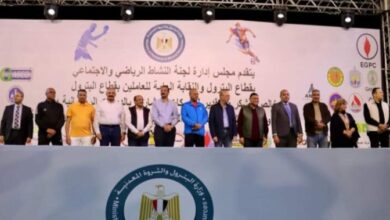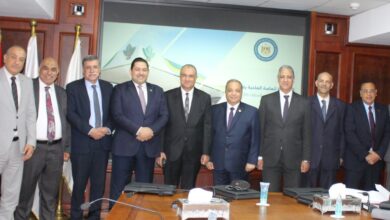هواوي توقّع على التزام الاتحاد الدولي للاتصالات لتوفير الاتصال الرقمي لـ120 مليون شخص في المناطق النائية على المستوى العالمي

وقّعت هواوي على التزام عالمي بالانضمام إلى التحالف الرقمي للاتحاد الدولي للاتصالات ،
والذي سيوفر الاتصال لـ120 مليون شخص في المناطق النائية في أكثر من 80 دولة بحلول عام 2025.
وأعلن ليانغ هوا،
رئيس مجلس إدارة هواوي عن التوقيع على الالتزام في “منتدى الاستدامة والاتصال+ 2022: الابتكار من أجل تحقيق الإنجازات” الذي نظمته هواوي. وناقش المنتدى دور الابتكارات التقنية في تعزيز الأعمال وتحقيق قيمة اجتماعية أكبر للاتصال ودفع عجلة الاستدامة في عصر الاقتصاد الرقمي.
وتحدث في المنتدى كبار المسؤولين الاتحاد الدولي للاتصالات والأمم المتحدة ووزراء الاتصالات والجهات التنظيمية في كمبوديا ونيجيريا وبنغلادش وباكستان وقادة الأعمال والشركاء والخبراء والعملاء من الصين وجنوب أفريقيا وبلجيكا وألمانيا.
وقال مالكولم جونسون، نائب الأمين العام للاتحاد الدولي للاتصالات: “من الواضح أن الاتصال وحده لا يكفي، بل يجب أن نوفر الاتصال بتكلفة مقبولة بالإضافة إلى المحتوى الملائم باللغة المحلية. وينبغي توفير المهارات اللازمة للمستخدمين لكي يتمكنوا من الاعتماد على الاتصال بأفضل وجه ممكن”. وأضاف: “أتوجه بالشكر إلى هواوي لدعمها التحالف الرقمي Partner2Connect (P2C) والتزامها باتفاقيات P2C لتوفير الاتصال للمناطق الريفية وتحسين المهارات الرقمية”.
ودعا سيدهارث تشاتيرجي، منسق الأمم المتحدة في الصين إلى “تعزيز التعاون بين الأطراف الفاعلة” من أصحاب القرار والقطاع الخاص والمؤسسات الأكاديمية والمجتمع المدني من أجل “ردم الفجوة الرقمية” التي يعاني منها ثلث سكان العالم.
وقال السيد تشاتيرجي: “يجب تعزيز التعاون في المجال الرقمي على المستوى العالمي من أجل اغتنام الفرص التي توفرها التقنيات الحديثة وتوفير المزيد من فرص العمل وتحسين الخدمات المالية الشاملة وردم الفجوة بين الجنسين وتحقيق التنمية النظيفة والارتقاء بعالمنا من أجل بناء مستقبل مزدهر للجميع”. وأضاف: “حان وقت العمل”.
وأكد الدكتور ليانغ في كلمته الرئيسية على ضرورة توفير الشبكات الثابتة باعتبارها من المطالب الأساسية في العصر الرقمي، حيث يعتبر الاتصال الذي يمكن الاعتماد عليه من المقومات الأساسية لتحسين حياة العديد من الأشخاص الذين ما زالوا غير متصلين.
وقال ليانغ: “لن تقتصر إسهامات الاتصال على توفير الاتصالات السلسة فحسب”. وأضاف: “سيسهم الاتصال في وضع التقنيات الرقمية في متناول الجميع وتوفير المعلومات والمهارات اللازمة لهم وتحسين الخدمات وتوفير المزيد من فرص العمل بفضل التقنيات الرقمية مثل الحوسبة السحابية والذكاء الاصطناعي، مما سيؤدي بدوره إلى تعزيز التنمية الاجتماعية والاقتصادية”.
وقال تشاو مينج، رئيس الحلول اللاسلكية لدى هواوي: “باعتبارها مؤسسة تتمتع بقدرات كبيرة في تقنية المعلومات والاتصالات، تعتمد هواوي على الابتكارات التقنية المتكاملة في التجهيزات والمحطات والطاقة ونقل البيانات والهوائيات للتغلب على التحديات التي تعيق نشر المحطات التقليدية مثل التكلفة الكبيرة وصعوبة النقل ونقص الطاقة ومشاكل الصيانة. وركزنا على تطوير حلول RuralStar وRuralLink لتوفير خدمات الشبكات للمناطق النائية وتجارب اتصال النطاق العريض فائق السرعة التي تشبه تجارب المدن للمزيد من الأشخاص والمستشفيات والمدارس والحكومات المحلية والشركات الصغيرة والمتوسطة”.
ووفرت حلول RuralStar الاتصالات لأكثر من 60 مليون شخص في المناطق النائية في أكثر من 70 دولة.
وتسهم شبكات النطاق العريض البصرية في إطلاق الخدمات الشاملة، حيث قدّمت هواوي حل AirPON المبتكر للمناطق منخفضة الكثافة السكانية بما فيها المناطق النائية. ويسهم الحل في الحد من أثر غرف التجهيزات وتكلفة تركيب الألياف الضوئية واستهلاك الطاقة في الشبكات ونشر شبكات الاتصال المحلية في وقت قصير.
وفي أفريقيا، نشرت هواوي أكثر من 250.000 كيلو متر من الألياف البصرية مما وفر الوصول إلى النطاق العريض فائق السرعة لـ30 مليون عائلة وتحسين تجربة المستخدمين بشكل كبير. ويتجاوز متوسط سرعة النطاق العريض المنزلي 30 ميجابت في الثانية، مما يوفر تجربة شبكة منزلية ذكية وسلسة وفائقة السرعة.
وفي ظل التطورات المتواصلة التي تشهدها البنية التحتية لتقنية المعلومات والاتصالات، تتيح التقنيات المبتكرة مثل الحوسبة السحابية والذكاء الاصطناعي للمناطق الريفية والنائية الاستمتاع بالتجارب السلسة التي يوفرها العالم الرقمي. وأطلقت Huawei Cloud استراتيجية “كل شيء كخدمة” التي ساهمت في توفير خبرة هواوي التي تمتد على مدار أكثر من 30 عاماً وتحقيق التحول الرقمي من خلال الخدمات السحابية مما وفر الوصول إلى البنية التحتية الرقمية لشركة هواوي على المنصة السحابية بسلاسة وبأسعار مقبولة ومستدامة مثل المياه والكهرباء.
ويسهم التحول الرقمي والمواهب الرقمية ونماذج الأعمال المبتكرة في تحقيق التنمية في المناطق النائية. وأعلنت هواوي أنها ستتعاون مع الشركاء على توفير الخدمات المالية الرقمية لـ500 مليون شخص والتعليم الشامل لـ500.000 شخص بحلول عام 2025 بفضل تحسين البنية التحتية لتقنية المعلومات والاتصالات.
وفي كمبوديا، أول شريك لبرنامج P2C من الاتحاد الدولي للاتصالات، ستتعاون هواوي مع المؤسسات الحكومية من خلال وزارة البريد والاتصالات والجامعات على توفير 10.000 فرصة تدريبية لمتخصصي تقنية المعلومات والاتصالات على مدار الأعوام الخمسة القادمة.
وتلتزم هواوي بتحقيق التنمية الشاملة، حيث تسهم في دفع عجلة التحول الرقمي في المناطق النائية من خلال الابتكارات التقنية، مما يوفر الحياة الرقمية السلسة للجميع ويسهم في تنمية الاقتصاد الرقمي على المستوى العالمي.
*Huawei signs global ITU pledge to help 120 million people in remote areas connect to the digital world*
Cairo, November 24, 2022: Huawei has signed a global commitment to join the International Telecommunication Union’s Partner2Connect digital alliance, which will bring connectivity to about 120 million people in remote areas in more than 80 countries by 2025.
Liang Hua, Chairman of Huawei, announced the decision at the company’s 2022 Sustainability Forum, Connectivity+: Innovate for Impact. The forum explored how ICT innovation could unleash the business and social value of connectivity and drive sustainability in the digital economy era.
Speakers at the event included senior leaders from the ITU and United Nations, telecom ministers and regulators in Cambodia, Nigeria, Bangladesh, and Pakistan, and business leaders, partners, experts, and customers from China, South Africa, Belgium, and Germany.
“It is clear connectivity alone is not enough. It must be affordable, the content must be relevant and in the local language, and users must have the skills to make best use of it,” said ITU Deputy Secretary-General Malcolm Johnson. “Thank you to Huawei for their support of the Partner2Connect (P2C) Digital Coalition, and for their announced P2C pledges in the key areas of rural connectivity and digital skills.”
Siddharth Chatterjee, United Nations Resident Coordinator in China, called for “multi-stakeholder partnerships” of policymakers, the private sector, academia, and civil society to close “the sobering reality” of a digital divide which excluded a third of the global population.
“Our dynamic world urgently needs improved digital cooperation to capitalize on the transformational potential of technology to create new jobs, boost financial inclusion, close the gender gap, spur a green recovery and redesign our world to be more prosperous and inclusive,” he said. “Now is the time to act”.
In his keynote address, Dr Liang stressed that access to a stable network was a basic requirement and right in the digital age. For many who remain unconnected, access to reliable connectivity would mark the first step towards transforming their lives.
“Connectivity will be more than just a tool for convenient communications,” he said. “Together with digital technologies like cloud and AI, connectivity will help bring everyone into the digital world, and provide them with access to more information and skills, better services, and wider business opportunities. This will, in turn, drive further social and economic development.”
Cao Ming, President of Huawei Wireless Solution, said: “As an enterprise with the most complete ICT capabilities, Huawei integrates the full-technology innovation potential of equipment, sites, energy, transmission, and antennas to address the difficulties faced by traditional site deployment, such as high costs, restricted transportation, lack of power, and maintenance challenges. We have continuously upgraded the RuralStar and RuralLink solutions to extend quality coverage to remote areas, enabling more people, community hospitals, schools, local governments, and small- and medium-sized enterprises to enjoy the same high-speed broadband connectivity experiences as those in cities”.
The RuralStar series solutions have provided connections for more than 60 million people in remote areas in more than 70 countries.
The construction of optical broadband networks offers another important route to realizing a universal service. Huawei has proposed an innovative AirPON solution for areas with low population density, including remote areas. This solution continuously reduces the footprint of equipment rooms, optical fiber installation costs, and network power consumption, while ensuring the rapid deployment of local communication networks.
In Africa alone, Huawei has laid more than 250,000 kilometers of optical fibers, enabling 30 million households to access high-speed broadband. User experience has seen constant improvement. The average speed of home broadband already exceeds 30 Mbit/s, bringing smarter, faster, and smoother home network experience.
As ICT infrastructure continues to evolve, innovative technologies like cloud and AI are allowing those in rural and remote areas to enjoy the convenience of a digital world. Huawei Cloud has proposed the Everything as a Service strategy and made Huawei’s more than 30 years of technical expertise and digital transformation experience available through cloud services. This means that access to Huawei’s digital infrastructure capabilities on the cloud is now just as easy, affordable, and sustainable as water and electricity.
Digital transformation, digital talent, and new business models are all essential for balanced development in remote regions. Huawei previously announced that by 2025, with the improved ICT infrastructure, the company will work with partners to enable 500 million people to enjoy digital financial services and 500,000 people to enjoy inclusive education.
In Cambodia, the ITU’s first P2C partner country, Huawei will work with government departments through the Ministry of Posts and Telecommunications and universities to provide 10,000 training opportunities for ICT professionals in the next five years.
Huawei is committed to inclusive development. Through its ongoing technological innovation, Huawei is contributing to a higher level of digitalization in remote regions, enabling everyone to enjoy the convenience of a digital life, and promoting the balanced development of the global digital economy.






